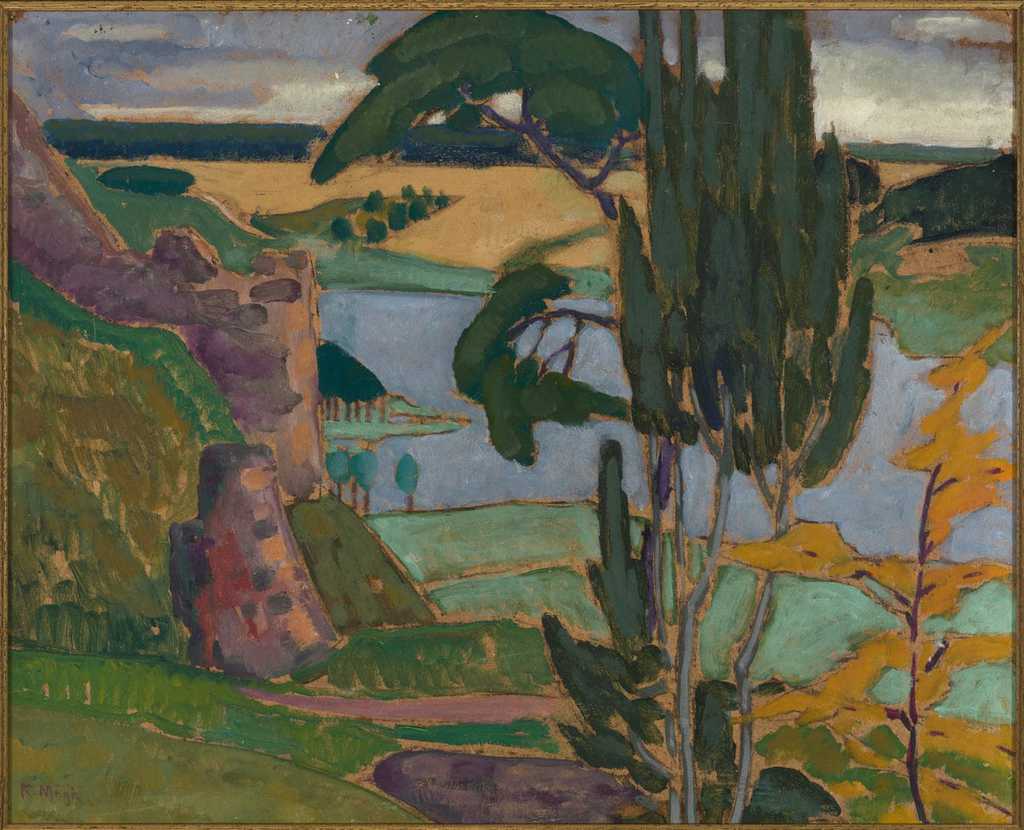
Due to its picturesqueness, the town of Viljandi and its surroundings have charmed many painters of the early and mid-20th century. Alongside Võru County, Estonia’s islands, and the Northern Estonian coast, this area is probably one of the most depicted places in Estonia. Konrad Mägi was not in the habit of going out on separate long-distance painting excursions, and so he depicted Viljandi thanks to the fact that he was able to stay at the home of his art patron, who lived in Viljandi. As a romantic spirit, here Mägi has discarded the urban surroundings and human types of the mid-1910’s and instead observed the ancient castle ruins and the picturesque landscape forms unfolding in the background. At the same time, one need not read too much into this: Mägi paid relatively little attention to motifs and was interested more in finding answers to questions specifically related to painting. This is also one such painting in which the contrasting of contour and broader surfaces, the differentiation of colour fields, the creation of the illusion of depth, and other such matters can be seen. These no doubt interested Mägi, who had by that time been painting for less than ten years. It has been noted that since Viljandi and the landscape forms near Viljandi differed from those in Saaremaa, Mägi’s brushstroke also changed its span accordingly: “The pointillist technique of his Saaremaa period recedes, partially becoming broader, sparser, softer, partially giving ground to longer rhythmic brushstrokes and larger colour surfaces.”